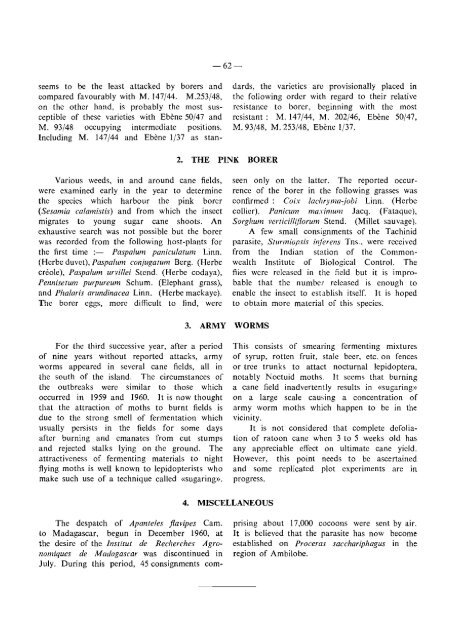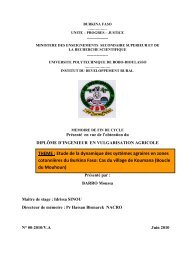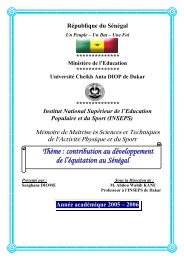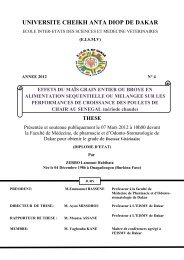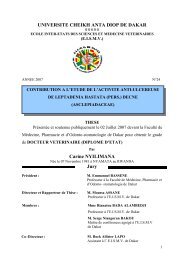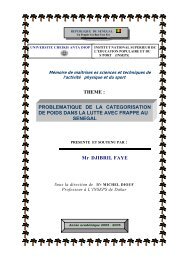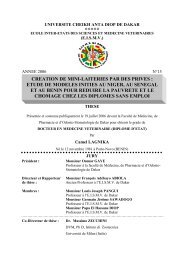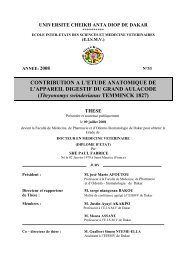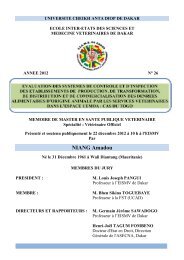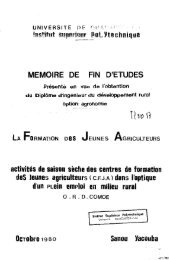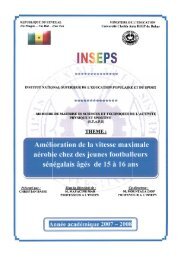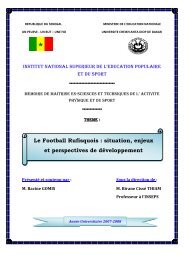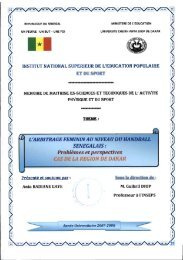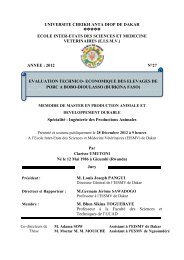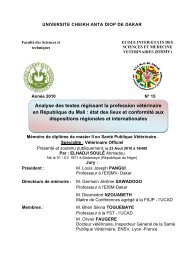Annual Report 1961 - BEEP
Annual Report 1961 - BEEP
Annual Report 1961 - BEEP
- No tags were found...
Create successful ePaper yourself
Turn your PDF publications into a flip-book with our unique Google optimized e-Paper software.
-62-seems to be the least attacked by borers andcompared favourably with M. 147/44. M.253/48.on the other hand, is probably the most susceptibleof these varieties with Ebene 50/47 andM. 93/48 occupying intermediate positions.Including M. 147/44 and Ebene 1/37 as standards,the vaneucs arc provisionally placed inthe following order with regard to their relativeresistance to borer, beginning with the mostrcsistant : M.147/44, M. 202/46, Ebene 50/47,M.93/48, M.253/48, Ebene 1/37.2. THE PINK BORERVarious weeds, in and around cane fields,were examined early in the year to determinethe species which harbour the pink borer(Sesamia ea/amistis) and from which the insectmigrates to young sugar cane shoots. Anexhaustive search was not possible but the borerwas recorded from the following host-plants forthe first time :- Paspalum paniculatum Linn.(Herbe duvet), Paspalum conjugatum Berg. (Herbecreole), Paspa/um urvillei Stcnd. (Herbe codaya),Pennisetum purpureum Schurn. (Elephant grass),and Phalaris arundinacea Linn. (Herbe mackaye).The borer eggs, more difficult to find, wereseen only on the latter. The reported occurrenccof the borer in the following grasses wasconfirmed: Coix lachryma-jobi Linn. (Herbecollier), Panicum maximum Jacq. (Fataquc),Sorghum verticilliflorum Stend. (Millet sauvagc).A few small consignments of the Tachinidparasite, Sturmiopsis inferens Tns., were receivedfrom the Indian station of the CommonwealthInstitute of Biological Control. Theflies were released in the field but it is improbablethat the number released is enough toenable the insect to establish itself. It is hopedto obtain more material of this species.3. ARMY WORMSFor the third successive year, after a periodof nine years without reported attacks, armyworms appeared in several cane fields, all inthe south of the island. The circumstances ofthe outbreaks were similar to those whichoccurred in 1959 and 1960. It is now thoughtthat the attraction of moths to burnt fields isdue to the strong smell of fermentation whichusually persists in the fields for some daysafter burning and emanates from cut stumpsand rejected stalks lying on thc ground. Theattractiveness of fermenting materials to nightflying moths is well known to lepidopterists whomake such use of a technique called «sugaring».This consists of smearing fermenting mixturesof syrup, rotten fruit, stale beer, etc. on fencesor tree trunks to attact nocturnal lepidoptera,notably Noctuid moths. It seems that burninga cane field inadvertently results in «sugaring»on a large scale causing a concentration ofarmy worm moths which happen to be in thevicinity.It is not considered that complete defoliationof ratoon cane when 3 to 5 weeks old hasany appreciable effect on ultimate cane yield.However, this point needs to be ascertainedand some replicated plot experiments are inprogress.4. MISCELLANEOUSThe despatch of Apanteles fiavipes Cam.to Madagascar, begun in December 1960, atthe desire of the lnstitut de Recherches Agronomiquesde Madagascar was discontinued inJuly. During this period, 45 consignments comprisingabout 17,000 cocoons were sent by air.It is believed that the parasite has now becomeestablished on Proceras sacchariphagus in theregion of Ambilobe.


